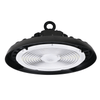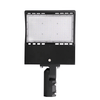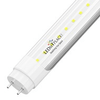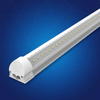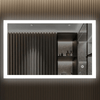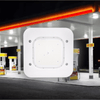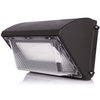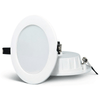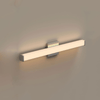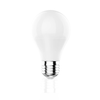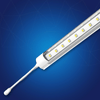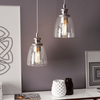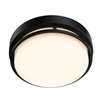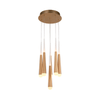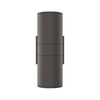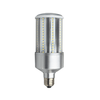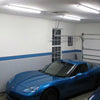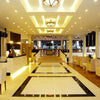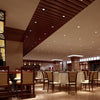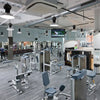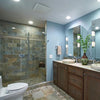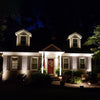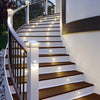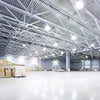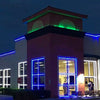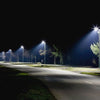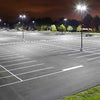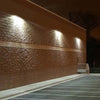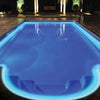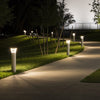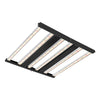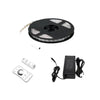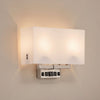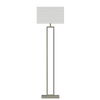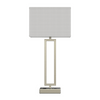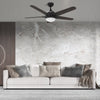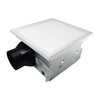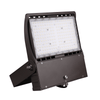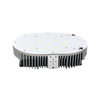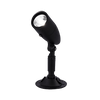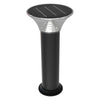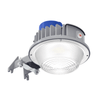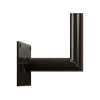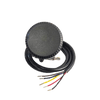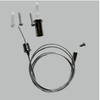Laboratories require lighting that is not only bright and clear but also safe and energy-efficient. LED lights are increasingly becoming the preferred choice for laboratories as they offer a range of benefits over traditional lighting options. In this article, we will discuss the best lighting for laboratories and why LED lights are the way to go.
1. Introduction
Laboratories require specialized lighting to ensure that scientists and technicians can accurately perform experiments and work with hazardous materials safely. Traditional lighting options such as fluorescent and incandescent lights have been used in laboratories for years. However, LED lights are now becoming the preferred choice for their efficiency, long lifespan, and environmentally friendly qualities.
In this article, we will discuss why good lighting is essential in laboratories, the traditional lighting options for laboratories, the advantages of LED lights, types of LED lights, factors to consider when choosing LED lights for laboratories, and installation and maintenance of LED lights for laboratories.
2. Why Good Lighting is Essential in Laboratories
Good lighting is essential in laboratories for several reasons. Firstly, accurate and bright lighting is necessary for carrying out experiments and working with hazardous materials. Secondly, inadequate lighting can cause eyestrain and headaches, which can lead to errors or accidents. Lastly, good lighting can improve productivity and reduce fatigue, which can be crucial in critical situations.
3. Traditional Lighting Options for Laboratories
The traditional lighting options for laboratories include fluorescent and incandescent lights. Fluorescent lights are energy-efficient but can produce flickering and uneven lighting, which can be detrimental to laboratory work. Incandescent lights are inefficient and can produce excessive heat, which can affect the accuracy of experiments.
4. The Advantages of LED Lights for Laboratories
LED lights have several advantages over traditional lighting options. Firstly, they produce bright and clear lighting that is easy on the eyes, making them ideal for laboratory work. Secondly, they are energy-efficient and have a long lifespan, which can save laboratories money on electricity bills and maintenance costs. Lastly, LED lights are environmentally friendly, as they do not contain toxic substances such as mercury.
5. Types of LED Lights for Laboratories
There are several types of LED lights that are suitable for laboratories. These include panel lights, linear lights, and high bay lights.
Panel Lights
Panel lights are thin and flat and can be installed directly into ceilings or walls. They produce even lighting and are ideal for laboratory areas that require a lot of lighting.
Linear Lights
Linear lights are long and thin and are ideal for illuminating long and narrow laboratory areas. They are available in various lengths and can be easily installed using mounting clips or suspension kits.
High Bay Lights
High bay lights are ideal for laboratories with high ceilings. They produce bright and clear lighting and are available in various wattages and color temperatures.
6. Factors to Consider When Choosing LED Lights for Laboratories

When choosing LED lights for laboratories, several factors should be considered to ensure that they are suitable for the laboratory's specific needs.
- Color Temperature
The color temperature of LED lights is measured in Kelvin and determines the warmth or coolness of the lighting. For laboratories, a color temperature of between 5000K and 6500K is recommended as it provides bright and clear lighting that is easy on the eyes.
- CRI
The color rendering index (CRI) measures how accurately colors are rendered under the LED light. Laboratories require high CRI lights (above 80) to ensure that colors are accurately displayed, especially when working with chemicals and materials that require color differentiation.
- Dimming Capability
LED lights with dimming capability are recommended for laboratories as they allow for the adjustment of lighting levels to suit specific tasks. This can be crucial when working with light-sensitive materials or when carrying out experiments that require controlled lighting.
- Flicker-Free Lighting
LED lights with flicker-free lighting are recommended for laboratories as flickering lighting can cause headaches and eye strain, which can affect productivity and accuracy.
- Energy Efficiency
Energy efficiency is a crucial factor to consider when choosing LED lights for laboratories. Energy-efficient LED lights can save laboratories money on electricity bills and reduce their carbon footprint.
- Safety
Safety is a crucial consideration when choosing LED lights for laboratories. LED lights that are UL listed, RoHS compliant, and free from toxic substances such as mercury and lead are recommended.
7. Installation and Maintenance of LED Lights for Laboratories
LED lights for laboratories require professional installation to ensure that they are installed correctly and safely. Maintenance is also crucial to ensure that the lights are operating at their optimum level. Regular cleaning and inspection of LED lights can prevent issues such as dust buildup and overheating, which can affect their performance.
8. Conclusion
Choosing the right lighting for laboratories is crucial for accurate and safe laboratory work. LED lights are becoming the preferred choice for laboratories due to their efficiency, long lifespan, and environmentally friendly qualities. When choosing LED lights for laboratories, several factors should be considered, including color temperature, CRI, dimming capability, flicker-free lighting, energy efficiency, and safety.
9. FAQs
-
Can LED lights be used in hazardous locations?
- Yes, LED lights can be used in hazardous locations as long as they are certified for the specific hazardous location.
-
Are LED lights suitable for all types of laboratory work?
- Yes, LED lights are suitable for all types of laboratory work, including chemical analysis, microbiology, and biochemistry.
-
Can LED lights be dimmed?
- Yes, LED lights with dimming capability are available and recommended for laboratory use.
-
How long do LED lights last?
- LED lights can last up to 50,000 hours, depending on their usage and maintenance.
-
Are LED lights expensive to install?
- The cost of installing LED lights can vary depending on the size of the laboratory and the type of LED lights required. However, the energy efficiency and long lifespan of LED lights can save laboratories money in the long run.





